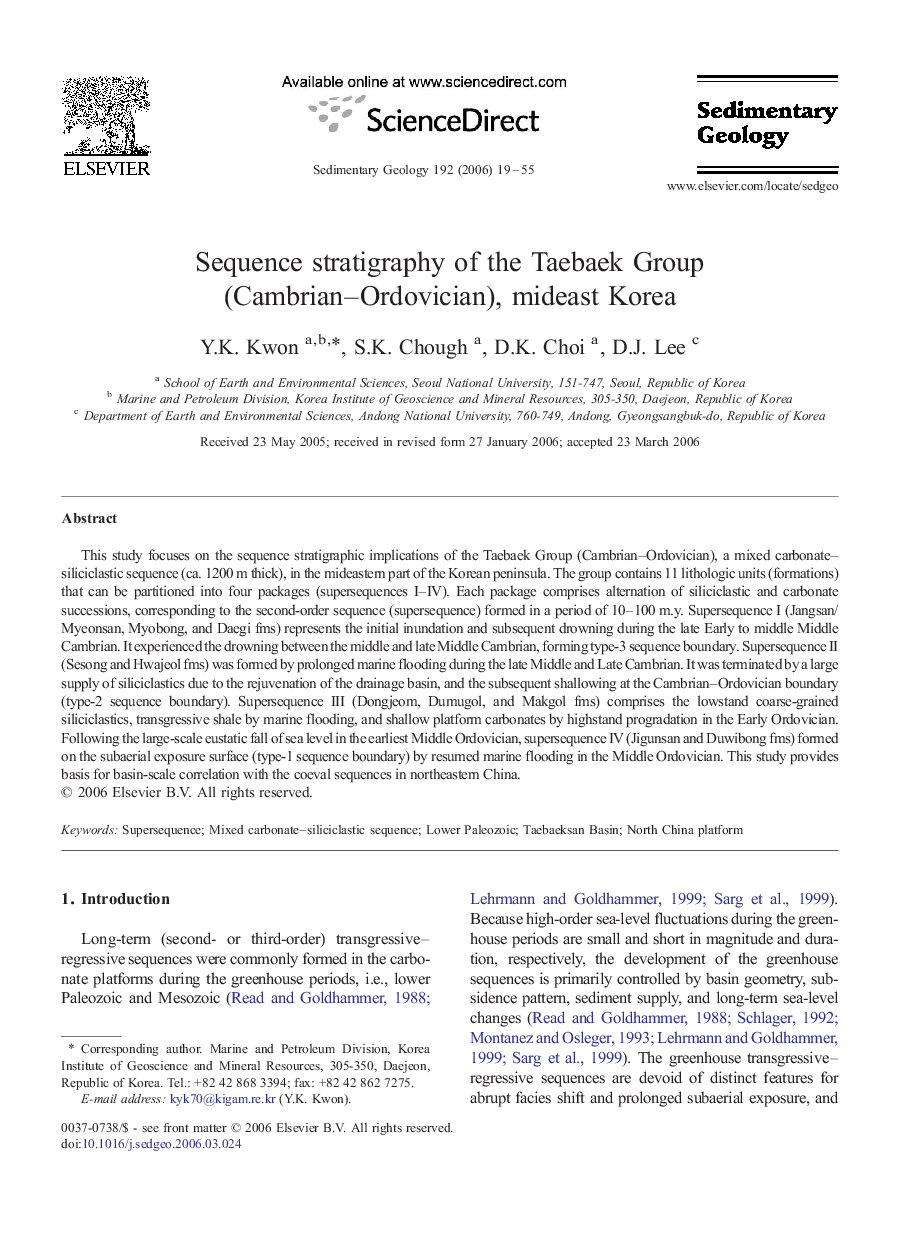| Article ID | Journal | Published Year | Pages | File Type |
|---|---|---|---|---|
| 4690908 | Sedimentary Geology | 2006 | 37 Pages |
This study focuses on the sequence stratigraphic implications of the Taebaek Group (Cambrian–Ordovician), a mixed carbonate–siliciclastic sequence (ca. 1200 m thick), in the mideastern part of the Korean peninsula. The group contains 11 lithologic units (formations) that can be partitioned into four packages (supersequences I–IV). Each package comprises alternation of siliciclastic and carbonate successions, corresponding to the second-order sequence (supersequence) formed in a period of 10–100 m.y. Supersequence I (Jangsan/Myeonsan, Myobong, and Daegi fms) represents the initial inundation and subsequent drowning during the late Early to middle Middle Cambrian. It experienced the drowning between the middle and late Middle Cambrian, forming type-3 sequence boundary. Supersequence II (Sesong and Hwajeol fms) was formed by prolonged marine flooding during the late Middle and Late Cambrian. It was terminated by a large supply of siliciclastics due to the rejuvenation of the drainage basin, and the subsequent shallowing at the Cambrian–Ordovician boundary (type-2 sequence boundary). Supersequence III (Dongjeom, Dumugol, and Makgol fms) comprises the lowstand coarse-grained siliciclastics, transgressive shale by marine flooding, and shallow platform carbonates by highstand progradation in the Early Ordovician. Following the large-scale eustatic fall of sea level in the earliest Middle Ordovician, supersequence IV (Jigunsan and Duwibong fms) formed on the subaerial exposure surface (type-1 sequence boundary) by resumed marine flooding in the Middle Ordovician. This study provides basis for basin-scale correlation with the coeval sequences in northeastern China.
